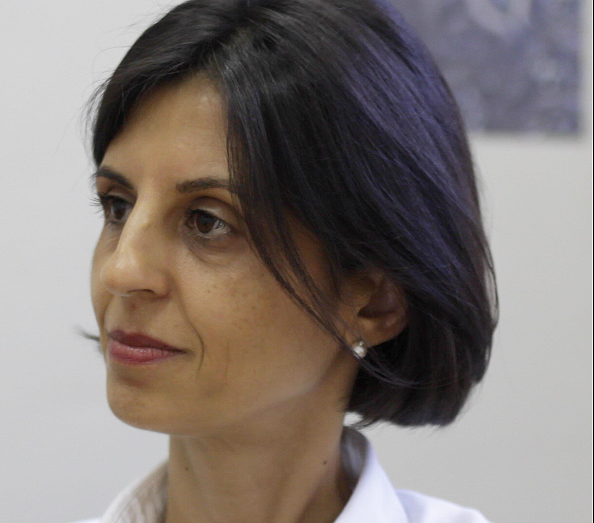Claudia Lodovichi, 2006

Career Development Award Project Title
“Circuit formation and function in the olfactory system”, 2006
Who she is
Neurobiologist Claudia Lodovichi graduated in medicine at the University of Pisa, Italy, where she earned a doctorate in neuroscience. She worked at the Duke University in Durham, North Carolina, between 1999 and 2003, and at the Columbia University, in New York, between 2003 and 2005. Since 2006 she has directed the research group “Circuit Formation and Function in the olfactory system” at the Veneto Institute of Molecular Medicine, Padua. She is also Assistant Professor at the CNR Institute of Neuroscience of Padua.
What she does
Neurons in the brain organize with exquisite precision in neuronal circuits which generate distinct patterns of activity. These different “brain rhythms” support sensory, cognitive and executive functions.
The brain is constantly active, even when it is at rest or asleep. We could therefore imagine the brain as an orchestra creating a variety of music, which does not depend on the activity of the single element, but from the synergy of the ensemble.
Claudia is interested in understanding how brain activity supports distinct behaviours, and how these patterns of activity change according to the status of the individual, or along the circadian and sleep-wake cycle, and how these patterns of activity get disrupted in pathological situations.
Structure and function of neuronal circuitries are strictly connected and interdependent. Activity can shape the architecture of neuronal circuits while the structure of neuronal connectivity defines patterns of activities.
Claudia began investigating how activity affects neuronal circuitry by studying neuronal plasticity in primary visual cortex. She then focused her attention on the olfactory system, an interesting system to address these questions, since the functional organization of olfaction is highly conserved and present a wide range of rhythms related to specific tasks. In addition, olfaction allows us to study not only the percept, but also cognitive aspects such as memory and emotion. We have all experienced the power of an odor to bring back vivid memories from the past or elicit a strong sense of pleasure or disgust. Furthermore, olfactory processing is affected in several neuronal pathologies.
Having contributed to unravel the architecture of the olfactory bulb, the first brain area where olfactory information are processed, her research is now focused in dissecting the patterns and the dynamics of neuronal network activity in the olfactory bulb and in connected higher brain areas. Claudia’s team aims to understand how local and wider neuronal networks support distinct behaviours, and how these patterns of activity change according to the status of the individual, during wake-sleep and circadian cycles or in pathological situations. They investigate brain neurophysiology at systems level, combing different experimental approaches in vivo such as electrophysiological recording, multiphoton imaging, optogenetics and behaviour.
News from the Lab
Brain rhythms are critically regulated by inhibitory interneurons and it has been shown that alterations of inhibitory neurons are at the basis of most, if not all, cognitive impairments. Lodovichi lab has been working on the impact of OPHN1, a gene associated to intellectual disability and autism, on forebrain GABAergic interneurons and neuronal network dynamics. Recently, Lodovichi and her collaborators found that in OPHN1 mutants, the altered migration on inhibitory interneurons is due to altered Chloride homeostasis. This finding unravel a distinct defect in intracellular Chloride level with respect to the current knowledge, highlighting the importance of measuring intracellular Chloride to design tailored cure.
Currently Lodovichi lab is investigating aberrant rhythms and neuronal network dynamics in model of intellectual disability-autism spectrum disorders, and also in models of Parkinson’s disease.
.


